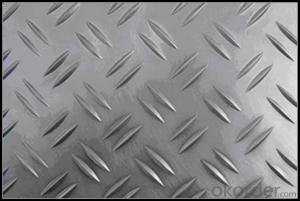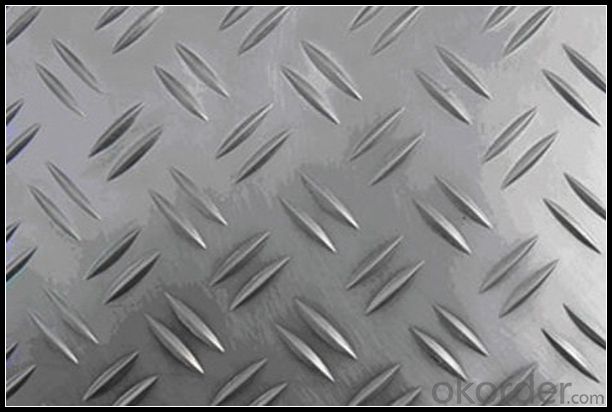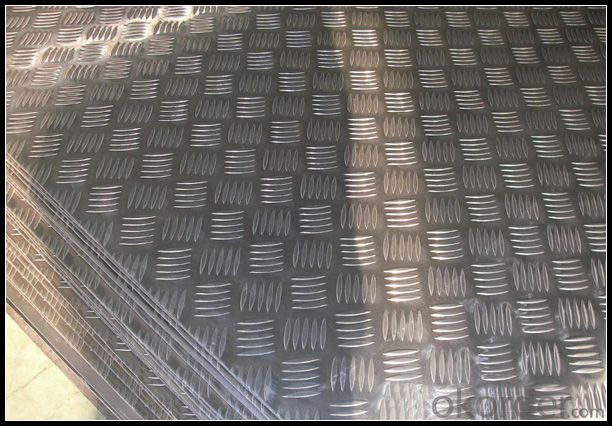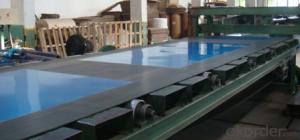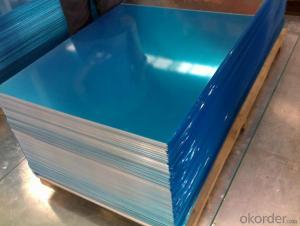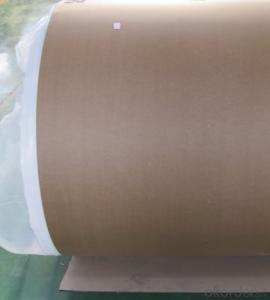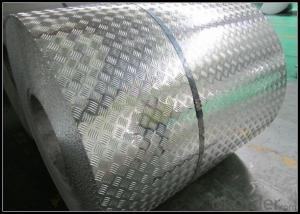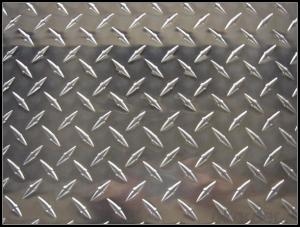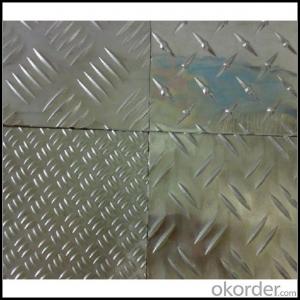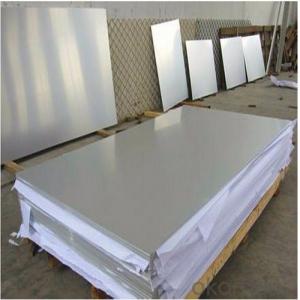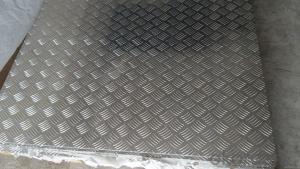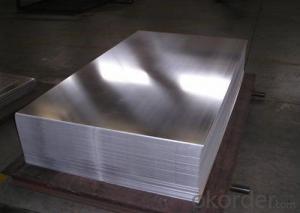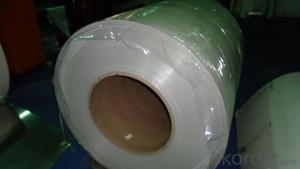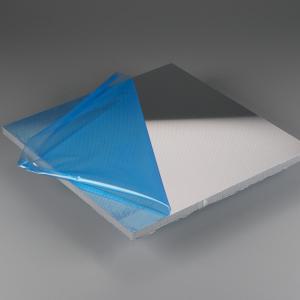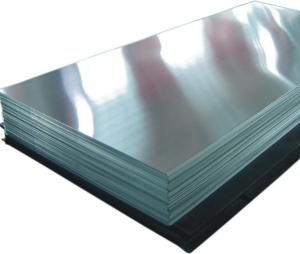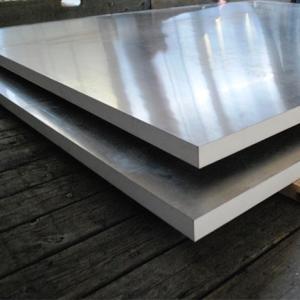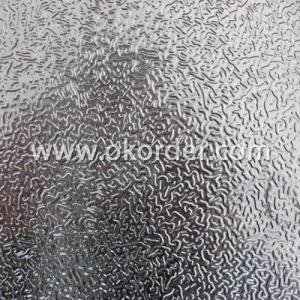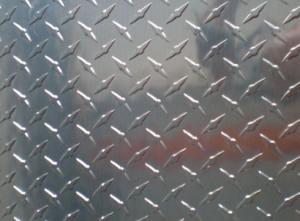Checkered Aluminium Plate 5052 Alloy for Inkjet Printing Automotive
- Loading Port:
- Shanghai
- Payment Terms:
- TT OR LC
- Min Order Qty:
- 5 m.t.
- Supply Capability:
- 10000 m.t./month
OKorder Service Pledge
OKorder Financial Service
You Might Also Like
Specification
1. Specification of Checkered Aluminium Plate 5052 Alloy for Automotive
EQUIPMENT | Double coating double baking; |
CAPACITY | 5000Mt/week |
SIZE | Thickness 0.18mm—2mm, width 40mm—1250mm |
PAINT THICKNESS | Top:18--25um, back:5-7um |
COIL WGT | 3Mt - 8Mt |
COIL ID | φ508mm,φ610mm |
SURFACE PAINT | EP, PE, HDP, SMP, PVDF |
COLOR SERIES | RAL color number series |
2. Application of Checkered Aluminium Plate 5052 Alloy for Automotive
(1).Interior: wall cladding, ceilings, bathrooms, kitchens and balconies, shutters, doors...
(2).Exterior: wall cladding, facades, roofing, canopies, tunnels,column covers , renovations...
(3).Advertisement: display platforms, signboards, fascia, shop fronts...
3. Feature of Checkered Aluminium Plate 5052 Alloy for Automotive
Surfact Quality :
Be free from Oil Stain, Dent, Inclusion, Scratches, Stain, Oxide Dicoloration, Breaks, Corrosion, Roll Marks, Dirt Streaks and other defect which will interfere with use,
Mechenical Property:
Chemical Composite and Mechanical Property
4. Certificate:
SGS and ROHS(if client request, paid by client), MTC(plant provided), Certificate of Origin(FORM A, FORM E, CO), Bureau Veritas and SGS (if client request, paid by client), CIQS certificate
5. Image of Checkered Aluminium Plate 5052 Alloy for Automotive
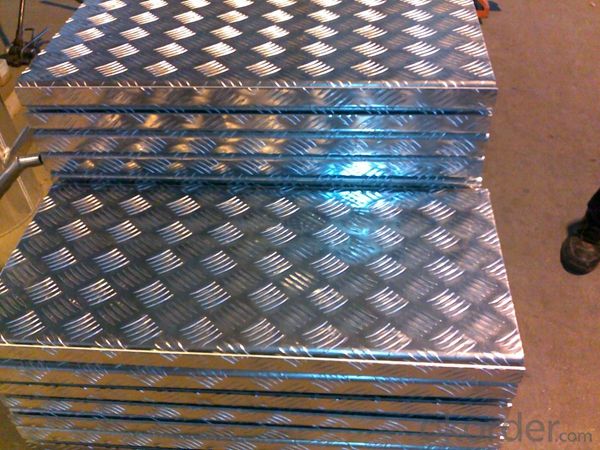
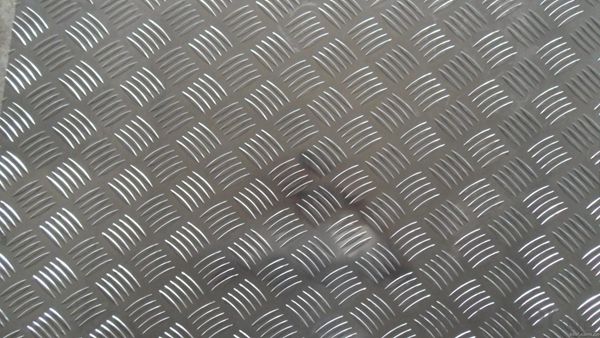
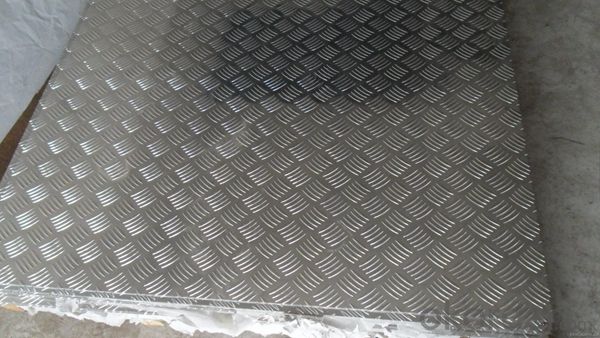
6. Package and shipping of Checkered Aluminium Plate 5052 Alloy for Automotive
First, plastic cloth with drying agent inside; Second, Pearl Wool ; Third, wooden cases with dry agent , fumigation wooden pallets, aluminum surface could cover blue PVC film
7. FAQ
1) What is the delivery time?
Dpends on actual order, around 20 to 35 days
2)What is the QC system:
We have QC staff of 20 persons and advanced equipment, each production is with MTC traced from Aluminum ingot lot.
3) What market do you mainly sell to?
Australia, America, Asia, Middle East, Western Europe, Africa etc
- Q: What are the rules or laws concerning the application of flame-retardant coatings on aluminum sheets?
- <p>Yes, there are regulations regarding the use of flame-retardant coatings on aluminum sheets. These regulations vary by country and application, but they generally aim to ensure safety and compliance with fire safety standards. In the United States, for example, the National Fire Protection Association (NFPA) provides guidelines, and building codes like the International Building Code (IBC) may specify requirements for flame retardancy. The European Union has its own set of standards, such as EN 13501, which classifies the reaction to fire performance of construction products. Compliance with these regulations is crucial to ensure that the aluminum sheets and their coatings meet the necessary safety standards and to avoid legal penalties.</p>
- Q: Are aluminum sheets resistant to saltwater corrosion?
- Generally, aluminum sheets exhibit resistance to corrosion from saltwater. When exposed to air or water, including saltwater, aluminum naturally develops a protective oxide layer. This layer serves as a barrier, preventing additional corrosion and safeguarding the underlying metal. Furthermore, aluminum is both lightweight and durable, making it a favored choice for numerous marine applications such as boats, shipbuilding, and offshore structures. Nevertheless, it is important to acknowledge that the level of resistance to saltwater corrosion may differ based on the specific alloy and surface treatment of the aluminum sheets. Consequently, selecting the appropriate alloy and applying protective coatings can further enhance the corrosion resistance of aluminum sheets in saltwater environments.
- Q: I have a lot of old aluminum cake pans, coffee pots, pots and pans and various old nuts and bolts made of aluminum. Would it be worth it to scrap them? They really aren't usable for cooking anymore. They are clean.
- yes the price is up right now.
- Q: How much is one ton of aluminium plate?
- For aluminum alloy, the aluminum alloy and other metal elements, according to different metallic elements, can be divided into eight branches, 1-8 etc.. According to the contents of various metallic elements, each department can be divided into different grades of alloy, such as 8011505230031060, each kind of alloy prices are not the same. In addition, the different processing thickness, width, the process used, the cost is not the same, so the specifications are different, the price is different. As for the aluminum plate, how much is it a ton? I think you have a better answer.
- Q: How is aluminum obtained from its ore?
- Aluminum is obtained from its ore through a process called Bayer's process. The ore, known as bauxite, is first crushed and then mixed with a hot solution of sodium hydroxide. This reaction causes the aluminum oxide in the ore to dissolve, forming sodium aluminate. The impurities in the ore, such as iron oxide and silica, remain insoluble. Next, the solution is filtered to remove the insoluble impurities, leaving behind a clear liquid containing sodium aluminate. This liquid is then cooled and treated with carbon dioxide gas, which converts the sodium aluminate into aluminum hydroxide. The aluminum hydroxide is then heated to form alumina or aluminum oxide. This process, known as calcination, involves heating the aluminum hydroxide at high temperatures to remove any remaining water and impurities. Finally, the alumina is mixed with a molten cryolite, which acts as a solvent, and then electrolyzed. Electrolysis involves passing an electric current through the molten mixture, causing the aluminum ions to migrate to the cathode, where they are reduced to form molten aluminum metal. The molten aluminum is then collected and cooled to solidify into ingots or other desired shapes. In summary, aluminum is obtained from its ore by first extracting the aluminum oxide using sodium hydroxide, followed by purification and conversion into alumina through calcination. The alumina is then electrolyzed using a molten cryolite, resulting in the production of molten aluminum metal.
- Q: What is the composition of 101 aluminum sheets?
- The composition of 101 aluminum sheets typically refers to the alloy used in their manufacturing. Aluminum alloy 101 is a commercially pure aluminum with a minimum of 99.0% aluminum content. It does not contain any significant amounts of other elements, making it the most basic and pure form of aluminum available. This high purity level makes it highly resistant to corrosion and provides excellent electrical conductivity. 101 aluminum sheets are often used in applications where a high degree of electrical conductivity or corrosion resistance is required, such as in electrical wiring, heat exchangers, and chemical processing equipment.
- Q: Are 101 aluminum sheets suitable for outdoor signage?
- Yes, 101 aluminum sheets are suitable for outdoor signage. Aluminum is known for its durability and resistance to weathering, making it an ideal material for outdoor applications. The 101 aluminum alloy is specifically designed for high-strength and corrosion resistance, making it even more suitable for outdoor signage. It can withstand harsh weather conditions, including rain, snow, UV exposure, and temperature variations, without corroding or deteriorating. Additionally, aluminum sheets are lightweight, making them easy to install and transport. Overall, 101 aluminum sheets provide a reliable and long-lasting solution for outdoor signage.
- Q: How do you prevent oxidation of aluminum sheets?
- One way to prevent oxidation of aluminum sheets is by applying a protective coating or paint to the surface. This barrier creates a physical barrier between the aluminum and oxygen, preventing the oxidation process from occurring. Additionally, storing the aluminum sheets in a dry and controlled environment, away from moisture and humidity, can help minimize the chances of oxidation.
- Q: Can aluminum sheet be used for electrical grounding applications?
- Yes, aluminum sheet can be used for electrical grounding applications. Aluminum is a good conductor of electricity and is commonly used in electrical grounding systems due to its low resistance and cost-effectiveness.
- Q: project on aluminum and i cant think of a good/funny slogan for it! HELP! i have already seen the other possibilities on google, try to be unique, and creative! but if you cant just answer the flipping question PLZ!
- Aluminum: Keeping stoners amazed for over 50 years!
Send your message to us
Checkered Aluminium Plate 5052 Alloy for Inkjet Printing Automotive
- Loading Port:
- Shanghai
- Payment Terms:
- TT OR LC
- Min Order Qty:
- 5 m.t.
- Supply Capability:
- 10000 m.t./month
OKorder Service Pledge
OKorder Financial Service
Similar products
Hot products
Hot Searches
Related keywords
